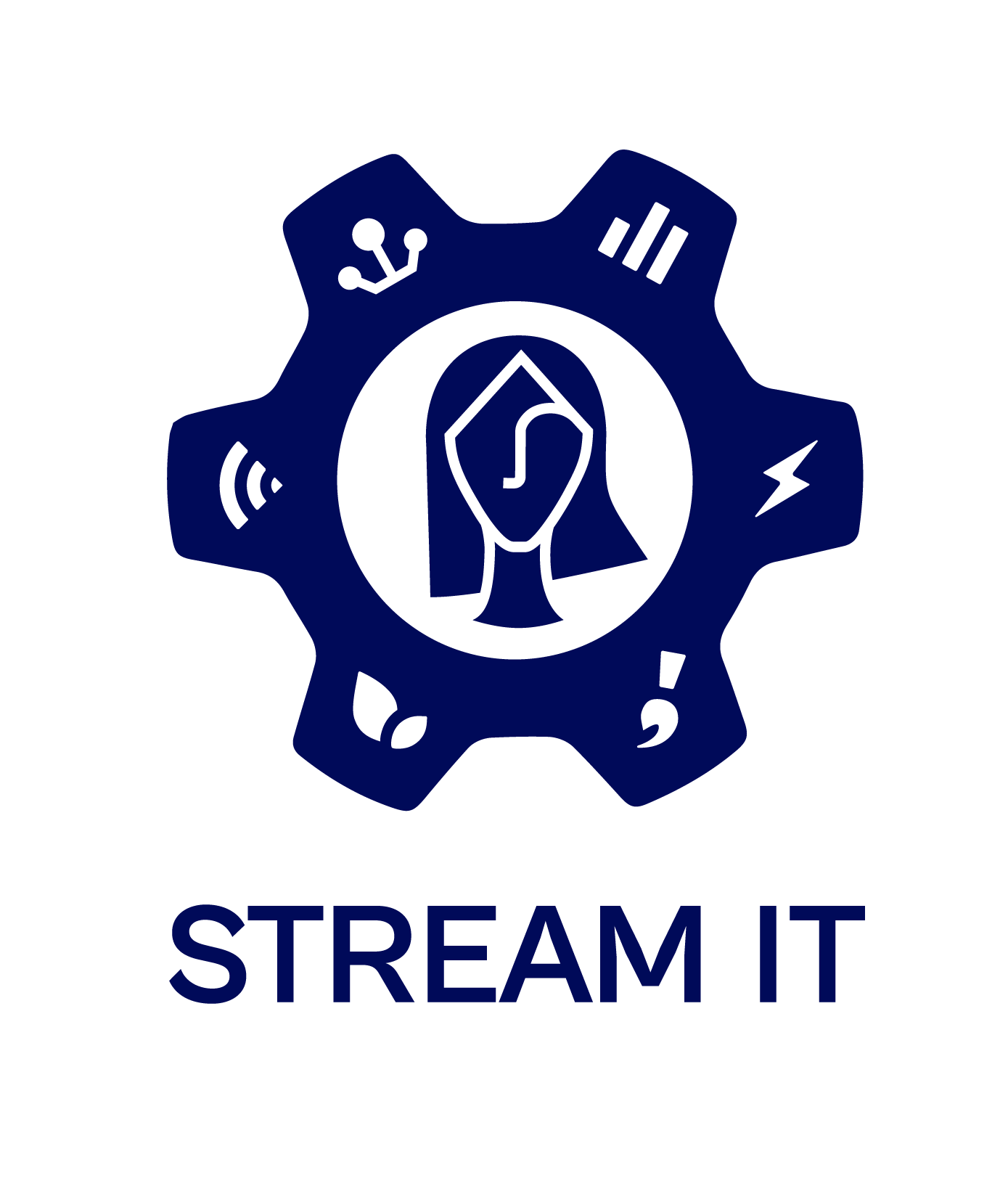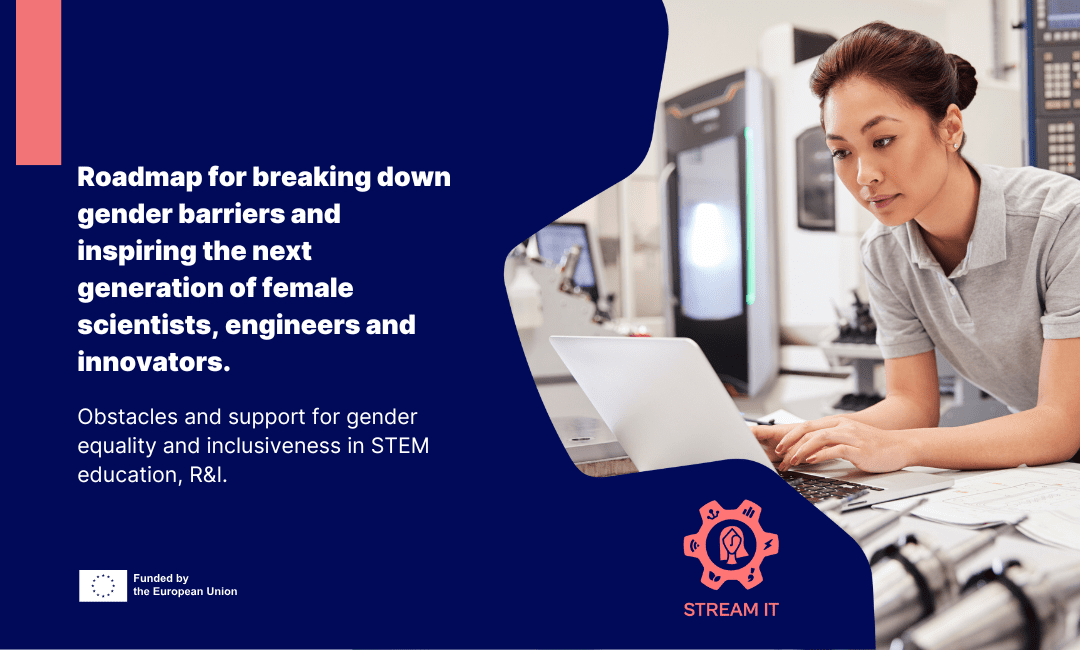For decades, pop culture has shaped career aspirations, and nowhere is this more evident than in STEM. “The Scully Effect”—named after The X-Files’ Dana Scully—inspired countless women to pursue careers in science, proving that strong female role models can change the game. But while the world has seen incredible breakthroughs by women—like Emmanuelle Charpentier and Jennifer Doudna, who won the 2020 Nobel Prize in Chemistry for their work on CRISPR gene-editing—women in STEAM still face systemic barriers.
This Research Report on “Obstacles and Supports for Gender Equality and Inclusiveness in STEM Education, R&I” dives deep into the status of women in STEAM across Europe. By identifying key points where interventions can have the biggest impact, the study aims to provide a roadmap for breaking down gender barriers and inspiring the next generation of female scientists, engineers, and innovators.
What Did We Do?
We aimed to provide a rock-solid foundation for initiatives that inspire girls and young women to pursue STEAM education. To achieve this, our research took a multi-layered approach:
- Diving Deep into Recent Research: We combed through 346 academic sources published in 2023 to understand what’s already known about women in STEAM and what gaps still exist.
- Listening to Female Students: We conducted 97 semi-structured interviews with female students at various education levels to capture their real-life experiences.
- Consulting the Experts: We interviewed 85 professionals, including educators and STEAM specialists, to uncover institutional perspectives and best practices.
What Did We Find?
The Leaky Pipeline: When and Why Do Girls Leave STEAM?
The concept of the “leaky pipeline” is a widely recognised metaphor for the gradual loss of women in STEAM fields at various stages of their education and careers. Rather than a single critical dropout point, our research confirms that this is an ongoing issue, where girls and women face multiple barriers from early education through professional life. These obstacles stem from a complex mix of personal confidence issues, institutional shortcomings, and deep-rooted cultural stereotypes that subtly – but powerfully – push women away from STEAM pathways.
What Does the Research Reveal?
At first, the playing field looks equal. Young girls in primary school show just as much curiosity, enthusiasm, and talent in STEAM subjects as their male peers. They eagerly experiment, solve problems, and dive into science and mathematics with confidence. But as they move through their education, something changes. Their interest begins to fade—not because of a lack of ability, but because of external pressures.
Subtle discouragement, outdated stereotypes, and a lack of visible role models quietly steer many girls away from STEAM. Society still whispers – through classrooms, media, and cultural norms – that these fields are “better suited” for boys. By the time they reach higher education, many young women have internalised these messages, believing they don’t belong.
The Stereotype Struggle: A Silent Force
From childhood, girls are bombarded with signals about what careers they should aspire to. Toy stores, television shows, and even textbooks reinforce the idea that science and technology are for men, while caregiving and creative fields are for women. This bias isn’t always overt, but it’s powerful enough to shape perceptions. The lack of female scientists, engineers, and tech leaders in mainstream culture further deepens this divide. Without seeing women in these roles, many girls struggle to picture themselves succeeding in STEAM careers.
The Role Model Gap: Who Inspires the Next Generation?
Having strong role models makes a world of difference, but in STEAM, female representation remains scarce. Women in these fields exist, but their achievements are often underpublicised or overshadowed. When young girls don’t see successful women in science and technology, they begin to doubt whether they belong there at all. Increasing visibility – through education, media, and mentorship programs – is crucial to changing this narrative.
The Confidence Gap: When Doubt Overshadows Talent
Even when girls perform just as well, or even better, than boys in STEAM subjects, they are far more likely to doubt themselves. Studies show that while boys often overestimate their abilities, girls tend to underestimate theirs. This lack of confidence leads them to hesitate in taking advanced courses, applying for competitive programs, or speaking up in class. Over time, these small moments of self-doubt accumulate, making it easier for them to walk away from STEAM altogether.
University Challenges: A Tougher Road Ahead
For those who do make it into STEAM programs at the university level, the struggles don’t disappear, but they often even intensify. Many young women describe feeling like outsiders in male-dominated classrooms and labs. Some report being overlooked in group projects, excluded from study sessions, or dismissed by peers and professors. These micro-aggressions, whether intentional or not, create a climate where women must constantly prove their competence, adding another layer of stress to an already demanding field.
The Career vs. Family Dilemma
Even after overcoming these hurdles, another challenge awaits: balancing a STEAM career with societal expectations of family life. The perception that these jobs require long hours, intense competition, and continuous up-skilling makes them seem incompatible with raising a family. Without workplace policies that support flexible schedules, parental leave, and mentorship opportunities, many talented women opt out before they even begin.
What Do Female Students Say?
Why Do Girls Choose STEAM?
Many young women enter STEAM because of a genuine passion for discovery, problem-solving, and innovation. They are drawn to these fields by an innate curiosity and the excitement of tackling complex challenges. Some students spoke about always being fascinated by how things work, whether it was coding an app, designing a robot, or conducting chemistry experiments.
Another crucial factor is encouragement from family and educators. Supportive parents, teachers, and mentors play a significant role in keeping girls engaged in STEAM. Many of the students we spoke to mentioned having a parent in a technical field or a teacher who recognised their talent and pushed them to pursue their interests despite societal expectations. Without this encouragement, some admitted they might have drifted away from STEAM early on.
The strong career prospects in STEAM are another major motivator. With industries increasingly reliant on technology and innovation, students recognise that these fields offer well-paid, in-demand jobs with opportunities to make a real impact. Many expressed that they saw STEAM as a pathway to financial independence and professional fulfillment.
What Challenges Do They Face?
Despite their passion and drive, female students in STEAM frequently encounter barriers that make their journey more difficult than it should be. One of the most common struggles is dealing with gender stereotypes and exclusion. In male-dominated classrooms and labs, many girls reported feeling out of place, overlooked, or even deliberately left out of group work. Some experienced micro-aggressions, such as being doubted by peers or having their contributions dismissed. Others faced more overt discrimination, with professors or classmates implying – directly or indirectly – that women are less suited for technical fields.
The lack of female networks further exacerbates this sense of isolation. Many students spoke about the difficulty of finding female peers or mentors who could relate to their experiences. Without a strong support system, it can be challenging to navigate the unique pressures of being a woman in STEAM. Some students even considered switching majors or dropping out altogether simply because they felt they didn’t belong.
Concerns about work-life balance also weigh heavily on young women’s minds. Many perceive STEAM careers as demanding, with long hours and high expectations. This perception can make some hesitate about pursuing these fields long-term, especially when societal norms still place a disproportionate burden of caregiving and household responsibilities on women. Even at the student level, some already worry about how they will juggle career ambitions with future personal commitments.
What Do Experts Say?
One of the biggest points of debate was whether gender-specific support programs should exist at all. Some experts argued that dedicated initiatives are essential for bridging the gender gap, providing girls with mentorship, financial aid, and role models they might otherwise lack. Others believed interventions should be neutral, focusing on inclusivity for all rather than singling out female students. However, despite these differing views, there was a shared understanding that without targeted action, progress would remain frustratingly slow.
Bias in the classroom remains one of the most subtle yet powerful barriers to gender equality in STEAM. Many educators, often unconsciously, reinforce gender stereotypes through their teaching methods. This can manifest in seemingly small ways, like calling on male students more frequently in class discussions or assuming that boys are naturally better suited for technical subjects. Over time, these biases discourage young women from pursuing advanced studies in STEAM fields, leading to self-doubt and disengagement. Experts emphasised that training educators to recognise and eliminate these biases is critical to fostering an equitable learning environment.
While mentorship programs and scholarships do exist, they are often informal or reliant on volunteers rather than embedded into institutional structures. Without consistent, large-scale initiatives to support young women in STEAM, many fall through the cracks. A few institutions have taken steps toward providing structured mentorship opportunities, but widespread change is still lacking. Experts highlighted that mentorship shouldn’t be left to chance – it needs to be a built-in part of the education system, ensuring that every young woman interested in STEAM has access to guidance and encouragement.
Finally, experts agreed that real change requires policy shifts at both academic and workplace levels. From paid parental leave to equitable hiring and promotion opportunities, gender-sensitive policies are essential for making STEAM careers more accessible and sustainable for women. Without these systemic changes, even the most talented women may struggle to advance in their fields, reinforcing the cycle of underrepresentation.
The expert perspectives reinforce a key takeaway: while individual passion and resilience play a role, true gender equity in STEAM cannot be achieved without structural reform. The challenge now is not just to recognise the barriers but to actively dismantle them, creating an environment where women in STEAM can thrive.
Where Do We Go from Here?
The data is clear: girls are not inherently less interested or less capable in STEAM fields but are rather being pushed out by systemic barriers. If we want to retain and empower more young women in STEAM, we must take decisive action.
Here’s what needs to happen next:
The gender gap in STEAM is not just a women’s issue – it is a global challenge that affects innovation, economic growth, and societal progress. By addressing the systemic barriers that push girls out of these fields, we can build a more inclusive and diverse future for STEAM.
Read more on the interviews we conducted for this report: Bridging the Gap: Overcoming Obstacles to Gender Equality in STEM Education and R&I
Author

Babeș-Bolyai University
Andreea Voina (PhD) is a lecturer at the Department of Communication, Public Relations, and Advertising at the Babeș-Bolyai University of Cluj-Napoca, Romania. She is a Fulbright alumna at the University of Georgia, USA, and a member of the Communication and Social Innovation Research Center (CoRe). Her research focuses on gender issues, women’s representation in politics and the media, and political communication.

